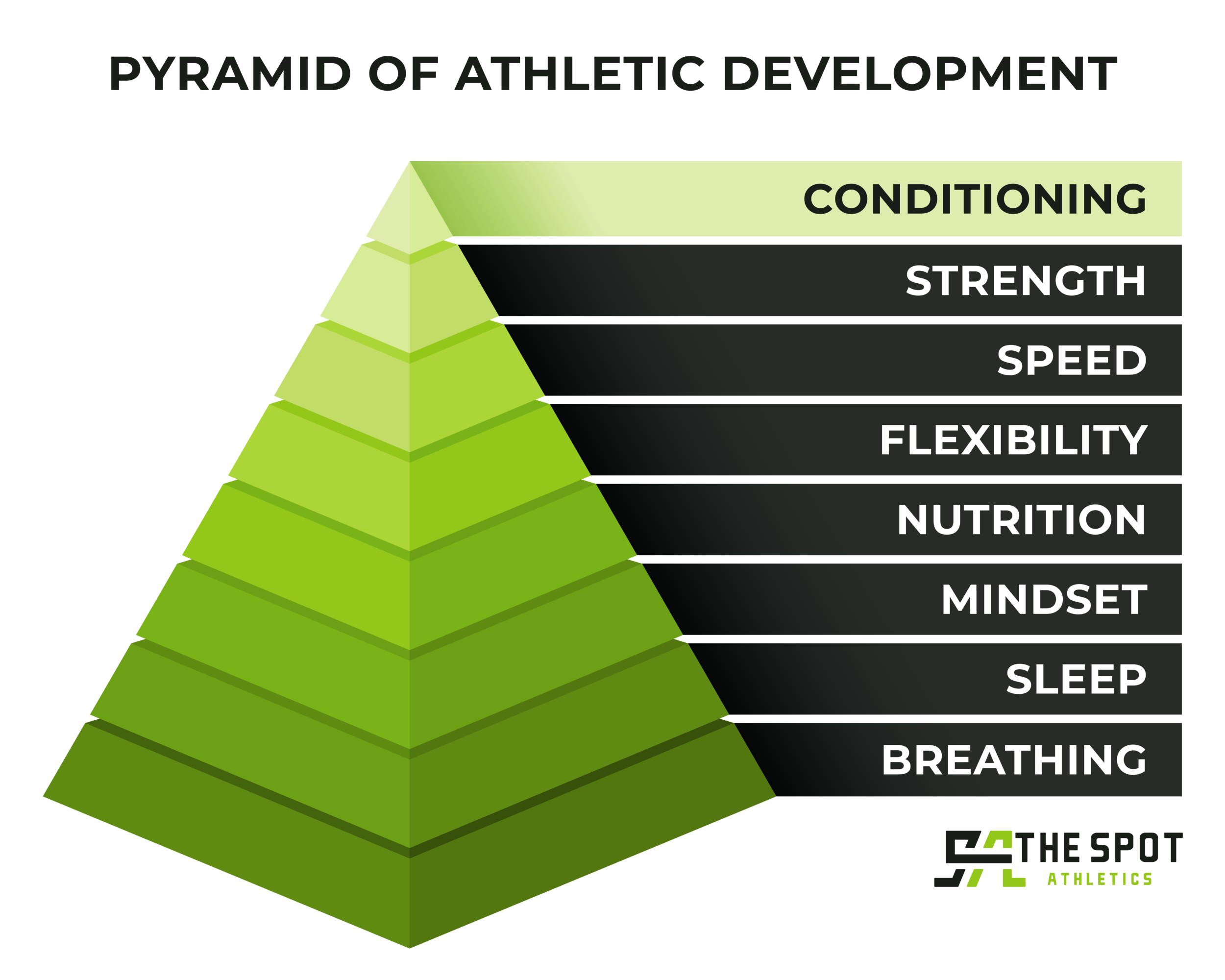I’m sure you’ve heard it before, “all right people, we’re gonna finish the session with some conditioning.” Or as an athlete at the end of practice “On the line, we got conditioning!” Here is the reality; if that is the only way conditioning is being addressed, then someone is missing out on how conditioning should be properly done.
What is conditioning?
Conditioning is far more than the last five to ten minutes of a training session, or a “hard” block of running. By definition, everything that your body goes through is conditioning. Simply put, your conditioning is your body’s ability to accomplish the tasks required of it. What this means is that everything you do is conditioning. This includes practice, the work you put into a training session, and even the amount of sleep you get in a night. For the purposes of this blog, we are going to strictly focus on the training of our energy systems to create what most would call a “conditioned” athlete. The information below is just scratching the surface on what actually goes into our athletic development programming, but it will allow you to understand our process.
How does it work?
The human body is super adaptable, meaning it is really good at responding to the stresses thrown at it. When talking about “conditioning”, the body is focused on responding to the type of metabolic and cardiovascular demands placed on it. This just means becoming more efficient in the movement and with the energy systems involved. To break this down, we need to understand the body has two primary pathways of utilizing energy, the aerobic and anaerobic energy systems. Aerobic simply means “with oxygen”, Anaerobic means “without oxygen”.
Think about this in terms of sports. When an athlete is on the field during a quick burst of sprinting, the anaerobic system will be responsible for performing the explosive play or task. When they stop sprinting between plays/series or explosive bursts, the aerobic system will be responsible for making sure they recover and can do it again, quickly.
These aerobic and anaerobic systems break down into four categories that we will explain below. Before we get into that we need to talk about something that has become a big pet peeve of ours over the years. You have probably heard the term “lactic acid” in regard to muscle soreness or fatigue, however, both of those common remarks are inaccurate. Lactic acid does not exist inside the human body, lactate does. And lactate does not cause muscle soreness.
Here are the four categories:
Glycolytic Alactic (Anaerobic)
Elevate the heart rate over 155
Do an activity for 10-20 seconds.
This system requires longer rest periods in between bouts. The heart rate must return down around 120 before the next bout.
Glycolytic Lactic (Anaerobic)
Elevate the heart rate over 155
Do an activity for 20-120 seconds.
This is the most overused form of conditioning as it is the hardest. Many people equate hard with good, which is a mistake.
Phosphagen (Anaerobic)
Give maximum effort in an activity
Do an activity for 0-10 seconds.
When training this system, the person must rest long enough to be able to give another maximum effort.
Oxidative (Aerobic)
Keep your heart rate between 120-155
Do an activity for longer than two minutes straight.
How do you do it?
Conditioning, along with all of the other qualities are built based on the athlete’s needs. Every athlete needs to have a great aerobic base if, for no other reason, it has a high correlation with the quality of life after athletics are over. On top of that, the benefits to recovery and efficiency make us have great respect for the aerobic system, and always ensuring that it is in a good place. When training the anaerobic system, it’s really just focusing on three concepts. First is intensity levels, which can be measured by heart rate and perceived levels of intensity. Secondly is duration, measured in time for both work AND rest times. Lastly is workload, which is the measure of repetitions and sets performed in any session. These three components are manipulated in all training sessions in order to condition the body based on the needs of the athlete and sport.
When do you do it?
The simple answer is anytime! The more complex answer is that it depends on the category you want to work, the time of year and the needs of the sport. It could be at the start of practice if you wanted to work more of the Phosphagen system. It could be on an off day for a fast-paced walk to boost the aerobic system and build some recovery. The bottom line is that conditioning can be used at many different times and for many different purposes, not just at the end of a practice or training session.
What does it look like?
When most athletes think of conditioning, they think of running. Conditioning does NOT need to be jogging or sprints. It can literally be any activity that you want. It could be swimming or going up the stairs, it does not matter. All that matters is that you get yourself in the proper heart rate and/or intensity for the proper amount of time. What does matter though, is that conditioning is not just running suicides or laps to simply make kids tired or for the appearance that they “worked hard” at the end of practice.
Looking at the four different categories, you could understand how a good conditioning program may include a fast walk for 30m that gets the heart rate to 125. It may also include a hard 15s of activity followed by 90s of rest. Yes, I said rest, because it is crucial is conditioning the Glycolytic Alactic system. Simply pushing as hard as you can the whole time only trains the Glycolytic lactic system. This develops an incomplete conditioning profile that limits performance and may cause injuries.
Now that you know all the different categories of conditioning and the different systems we can effect, you start to understand why we put so much time and effort into developing our programming. The athletes at The Spot Athletics are going to work hard, smart, and in a way that will help them grow throughout their entire athletic careers. Hopefully, after reading this blog, you have a better understanding of conditioning and can help your’s do the same.


